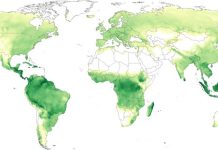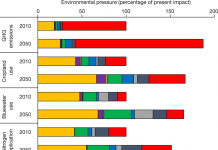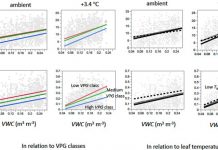海洋沉积物中的甲烷厌氧氧化与硫酸盐还原耦合在一起,是由能够利用甲烷的古生菌(ANME)和δ变形菌完成的。然而,该反应背后的生化通道及两个物种之间 的电子转移机制却一直难以确定。现在,Jana Milucka等人发现,这一反应涉及ANME将硫酸盐还原为元素硫及由δ变形菌造成的二硫化物歧化反应(一种与自己发生反应的物质所同时发生的氧化反应 和还原反应)——其中后者是一种以前人们不知道的细菌硫转化。
【News and Views】Samantha B. Joye. Microbiology: A piece of the methane puzzle. Nature 2012 491: 538–539 doi:10.1038-nature11749.

The identification of a sea-floor microorganism that single-handedly conducts anaerobic oxidation of methane changes our picture of how the flux of this greenhouse gas from the ocean to the atmosphere is regulated.
【Article】Jana Milucka Timothy G. Ferdelman Lubos Polerecky Daniela Franzke Gunter Wegener Markus Schmid Ingo Lieberwirth Michael Wagner Friedrich Widdel & Marcel M. M. Kuypers. Zero-valent sulphur is a key intermediate in marine methane oxidation. Nature 2012 491: 541–546 doi:10.1038-nature11656.
Abstract
Emissions of methane a potent greenhouse gas from marine sediments are controlled by anaerobic oxidation of methane coupled primarily to sulphate reduction (AOM). Sulphate-coupled AOM is believed to be mediated by a consortium of methanotrophic archaea (ANME) and sulphate-reducing Deltaproteobacteria but the underlying mechanism has not yet been resolved. Here we show that zero-valent sulphur compounds (S0) are formed during AOM through a new pathway for dissimilatory sulphate reduction performed by the methanotrophic archaea. Hence AOM might not be an obligate syntrophic process but may be carried out by the ANME alone. Furthermore we show that the produced S0—in the form of disulphide—is disproportionated by the Deltaproteobacteria associated with the ANME. Our observations ex







